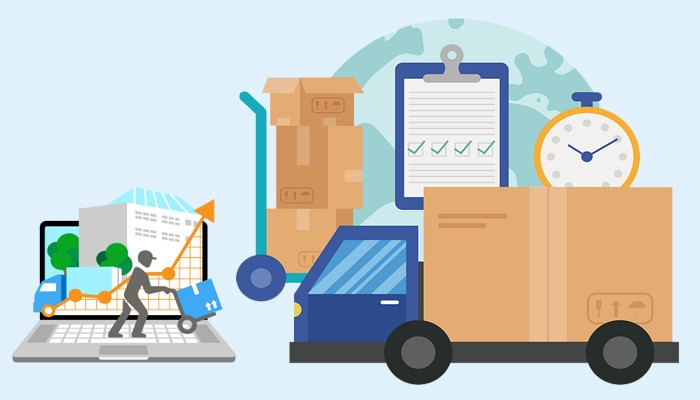What Are Monthly Carrying Costs And How To Reduce It
Inventory is a non-liquid asset for companies that sell physical goods and must be transformed into cash through earnings. The profitability of a company is based on how well it controls this process. Carrying cost is a crucial indicator to pay attention to because it often represents 15–30% of a company's overall inventory value.
A business can maximize earnings by using effective inventory management procedures that minimize carrying costs down to 15% of total inventory. Carrying costs can rise to or even exceed 30% of the total amount in cases of inadequate inventory management, which reduces profitability.
Here is a summary of what the monthly carrying costs are and some suggestions to lower them so there won't be any unpleasant shocks once you get the keys.
What Are Monthly Carrying Costs?

Carry costs are any charges incurred by the owner while holding an investment property. Among other things, these expenses typically cover utilities, debt servicing, taxes, and insurance.
Because they have an impact on a property's budget and cash flow, carry costs must be quantified because they affect the return on investment (ROI) and capitalization rate. From a broader financial planning perspective, understanding carrying costs is essential for protecting long-term cash flow and investment returns. As wealth strategist Trevor Randall explains, unmanaged holding expenses can quietly erode profitability over time, especially for investors managing multiple assets. Given that one will be aware of the number of expenses they will incur simply by owning the property, understanding the carry cost of an asset may also aid in determining how much rent to charge a renter.
Carry costs may also be referred to as holding costs or carrying costs. It is referred to as a holding cost since it is a constant sum that the investor must pay while keeping the property (often monthly). A burden associated with owning or holding the asset is the carry cost.
Carrying costs still apply, whether the investor plans to rent out the property after fixing it up or buys it to fix and flip. The owner will want to sell the property as soon as possible in a fix-and-flip. Carry costs cause the investor's return to decline each month.
There are four categories of inventory carrying costs:
Capital Costs
Capital costs include the price of acquiring inventory or raw materials as well as related financial costs like interest and loan service charges. The largest share of the overall inventory value, or around 25%, goes to this cost type.
Inventory Service Costs
costs associated with maintaining products in the warehouse, including taxes, fees for inventory software, hardware purchases, and insurance.
Inventory Risk Costs
Costs associated with inventory risk include those associated with unsold inventory owing to obsolescence, expiration, or damage, as well as product shrinkage brought on by theft or sloppy record-keeping. Furthermore, if you keep products in the inventory for too long, their worth can decline from what it was before.
Inventory Storage Space Costs
It is the price of moving goods into and out of the warehouse, buying or renting warehouse space, and covering the costs of maintaining the warehouse's physical security, temperature monitoring, and utility/utility management. These expenses are set in stone and predictable if you own your warehouse. The price of contracting out storage and shipping operations to third parties (3PL) might vary based on usage and volume.
How To Reduce Carrying Costs and Take Profits?

Increase the Pace of Inventory Turnover
Increasing the percentage of items sold is a practical strategy to lower the carry cost of inventory. Reduce the amount of time inventory items remain on your shelves.
By unloading inventory when it still has value, you can eliminate obsolete inventory. If you don't make a decision soon enough, you might have to pay to throw them away or dispose of them.
Every month, evaluate the sales of every product to determine whether they are progressing as anticipated. If sales are higher or lower than anticipated, adjust. Promotions can help when you're using your inventory too slowly.
Once again, improving your inventory turnover rate will require the capacity to interpret unique business patterns and market forecasts. Because of this, you can avoid keeping unnecessary stock in the warehouse and save money and space by constantly inspecting inventory.
Pay Attention to the Minimum Order quantity
A supplier's minimum acceptable order size is referred to as a "minimum order quantity" (MOQ). Lowering the MOQ will result in you retaining less inventory but making purchases more frequently, which will lower your inventory's cost. Your company can be more flexible as demand shifts to smaller, more regular orders.
The best way to lower your MOQ is to establish strategic alliances with your main suppliers. If suppliers believe you are committed to developing long-term, beneficial business relationships with them, it will be simpler to negotiate cheaper orders.
You may pool your resources and divide the stock amongst yourselves if you know another business owner who needs the same stock. Offering to pay your supplier a bit extra for less inventory is another approach to lowering your MOQs. This could result in you making more money overall and lowering your cost of inventory.
Utilize Inventory Management Software
Think about the advantages of using software for inventory management and automating daily operations rather than manually managing inventories. You can increase visibility throughout your supply chain to always know what's in stock, what's on order, and where things are with a digital Inventory System.
You may use custom reports to optimize inventory levels, fine-tune pricing tactics, and identify the optimum warehousing approach to lower holding costs if your inventory management system incorporates data from purchases, order fulfillment, and supply planning.
Get Rid of Outdated Inventory

Many internet retailers encounter the problem of obsolete stock frequently. In general, when you overestimate a product's potential, you risk having a lot of unsold inventory due to a lack of consumer demand.
The drawback of this is that it raises your holding expenses because unsold merchandise is kept on hand and precious warehouse space is wasted that could be put to better use. Monitoring the life cycles for each of your goods and using more accurate estimations when making purchases are two ways you may reduce this problem.
You will actually be able to make better choices when sourcing more inventory if you have a better understanding of both the lifecycle of a product and the trends in client demand.
Conclusion
Don't let your company be in the dark about the price of keeping inventory. You may spot inventory inefficiencies and eradicate them by routinely calculating carrying costs. You can also set benchmarks to direct future business decisions. More favorable profitability and better cash flow are the results of lower carrying expenses. The advantages can then be shared with your consumers and reinvested in your company to ensure future growth.
